
Caution: spoilers ahead for Loki episode 5
After last week's modest selection, Loki episode 5 offers a literal world of MCU Easter eggs, including the show's best Marvel references yet. Loki and Sylvie successfully revealed the truth behind the TVA in episode 4, pulling back the curtain on the mysterious Time-Keepers and proving their organization was staffed entirely by former variants callously deprived of all prior memories. The pair's happiness was short-lived, however, when Loki was uncharacteristically caught from behind by Ravonna Renslayer and pruned out of existence... or so we thought. In truth, Loki (and everything else that ever found itself on the end of a TVA pruning) was sent to the Void at the end of time - a dumping ground for everything the TVA deemed surplus to Sacred Timeline requirements.
This week's "Journey Into Mystery" reunites the entire Scooby Gang, with Loki, Mobius and Sylvie teaming up to escape the Void and uncover the real force behind the TVA. They're joined by a gaggle (or whatever the collective term for Lokis might be) of Variants pruned from a host of wildly different MCU timelines. Calling upon the power of love and friendship, the Lokis overcome a deadly guardian and their own unyielding habit of stabbing each other in the back to take the next step on their quest for glorious purpose.
As you'd expect from a Void realm littered with the remains of pruned timelines, "Journey Into Mystery" is brimming with Easter eggs pertaining to the MCU, Marvel comic lore, and even real life history. Here are all of the references, nods, callbacks and in-jokes we found lurking in Loki episode 5.

Even the name of Loki episode 5 is an Easter egg. "Journey Into Mystery" is a phrase many Marvels fans will recognize as a comic title that began in the 1950s, subsequently becoming one of the company's leading publications. It was through Journey Into Mystery that Thor made his debut in 1962, as did Loki (in his current form) a few months later.
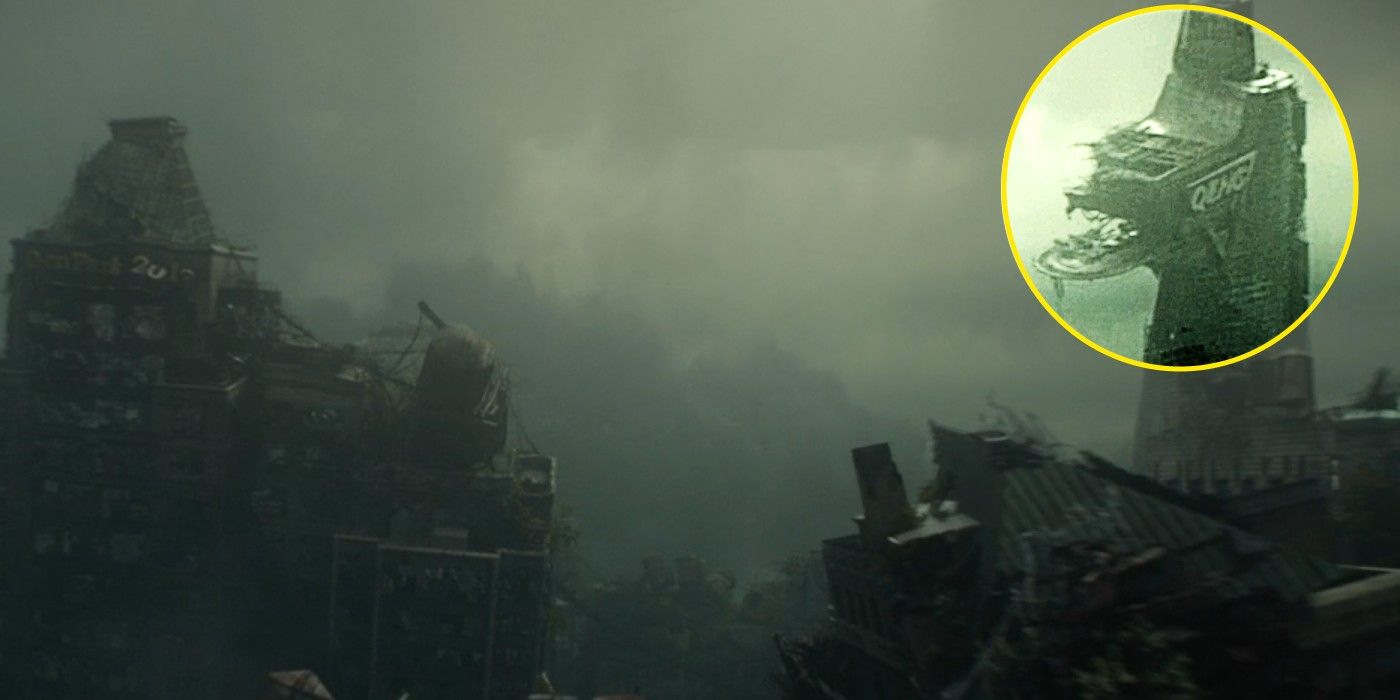
In episode 4's post-credits sequence, the ruins of Stark Tower could be glimpsed in the background behind Richard E. Grant and his fellow Lokis, but "Journey Into Mystery" provides a closer look, revealing an Easter egg inside the Easter egg, to paraphrase Mobius. Instead of the usual Stark of Avengers logo, the tower is clearly adorned with "Qeng," which is a nod to Qeng Enterprises, the company Tony Stark sold his famous tower to in a 2015 Avengers comic run. The Qeng CEO was a mysterious Mr. Gryphon - an alter ego of Kang the Conqueror who became trapped on 21st century Earth. Does this prove Kang's invasion already took place as a Nexus event? Or is Qeng Tower a hint that the purple conqueror himself is behind the TVA?
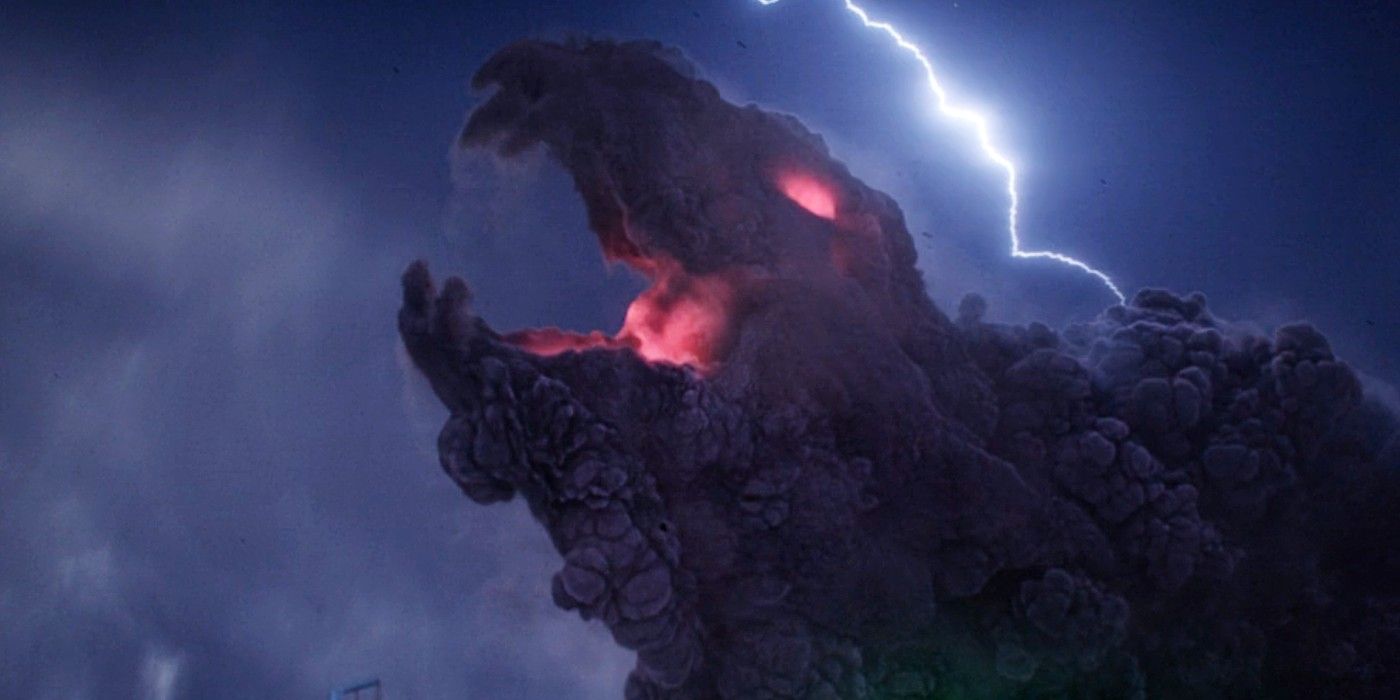
It would seem the TVA have been pruning the Lost island, judging by the show's new monster. Indeed, the biggest problem Loki faces in the Void isn't the bad weather or crushing existential self-doubt, it's the realm's guard dog, designed explicitly to prevent any pruned Variants escaping. This bad-tempered monster comes in the form of Alioth - a smoky and destructive cloud capable of chewing through whatever the TVA throws into its path. In the Marvel comics, Alioth is a similarly purple-hued cloud with red eyes, and he debuted in 1993 as a rival to Kang the Conqueror. Unbound by time, Alioth boasts a massive temporal empire, but his MCU counterpart seems to be a more mindless villain... for now, at least.

As the quintet of Lokis traverse the dim grasslands of the Void, several large stone heads can be spotted protruding from the earth. One of these belongs to Ant-Man villain, Yellowjacket. Played in the MCU by Corey Stoll, Yellowjacket was dealt a subatomic crushing at the hands of Paul Rudd's Scott Lang and hasn't been spotted since. While the gigantic dimensions of this Loki Easter egg can almost certainly be attributed to the size-altering capabilities of Yellowjacket's suit, there are several ways it might've wound up populating the Void. Either a Variant Yellowjacket was pinched by the TVA, or the original Yellowjacket crossed the Quantum Realm to reach the end of time itself.

One of the best Easter eggs in "Journey Into Mystery" (and Loki as a whole) is the remains of the Thanos-Copter. Sitting in the Void world, the dilapidated ruins of a garish yellow helicopter with "Thanos" emblazoned on the side can be seen. This is a direct nod to the Thanos-Copter, which made a brief, ill-advised appearance in 1979 as the Mad Titan's favorite mode of transport. The sight of a major Marvel baddie bumbling around in a helicopter was widely mocked by readers, and has since been consigned to the trash can of quirky and quickly-forgotten failed experiments. In a fun twist of fortune, it seems at least one Thanos Variant built himself a chopper, and was denied by the TVA. That's one pruning we can get behind.

As the camera pans down into the Lokis' bowling alley lair, the audience sees a cross-section of debris buried beneath the Void world, and strewn across the landscape are plastic lunch trays and juice boxes directly from TVA headquarters. It's unlikely that the organization's own lunch equipment was in violation of Time Variance laws, but perhaps the Minutemen and analysts got lazy and started pruning their trash instead of disposing of it properly. Every TVA recruit believes their magic time wand can disintegrate matter - it makes sense they'd use them to ditch garbage.

Not all of the discarded remnants inside the Void are as worthless as TVA lunch trays. Compacted in the dirt, Thor's famous hammer Mjolnir can be spotted. It's not clear whether the hammer itself became a Variant for some reason, or whether Mjolnir was simply consigned to the Void along with a Variant of its Asgardian owner. Loki does, however, provide one hint as to whom the weapon might've belonged to...

Desperately trying to reach the full-sized Mjolnir is a pint-sized Throg who, as the name implies, is a combination of a frog and the God of Thunder. Simon Walterson was a human transformed into a frog by magic and then granted the powers of Thor after picking up Mjolnir. He's apparently also a Variant as far as the MCU is concerned. In Loki's Throg scene, we see the jar of Asgard's Amphibian is labelled "T365." This serves as a reference to 1986's Thor #365, in which Throg made his comic book debut.

Descending into the Lokis' predictably eclectic headquarters, the four Variants are helping themselves to a box of "Roxxiwine" - even Alligator Loki is enjoying the hedonistic revels. Roxxiwine is a callback to a previous Loki MCU Easter egg - the Roxxcart mall Sylvie was found hiding in. The Roxxon corporation are well known in Marvel comic lore, and their presence has been teased in the MCU as far back as Iron Man's solo movies. Loki continues to imply the company will become more influential in Earth's future.

When DeObia Oparei appeared as a Loki Variant holding a Mjolnir-esque hammer during the post-credits of episode 4, he was listed in the German credits as "Boastful Loki." And it's now clear why, as the Variant rivals Jay from The Inbetweeners for his casual relationship with the truth. According to Oparei's character, he was pruned for beating Iron Man and Captain America, then collecting all of the Infinity Stones as reward. Evidently, this did not happen, but those are some solid name-drops nonetheless.

The Void is home to a number of potential real life mysteries, with old boats and UFOs peppered across the horizon. One of the most direct nods to a genuine conspiracy theory is the Polybius arcade game cabinet seen behind Richard E. Grant while the five Lokis are discussing their respective Nexus events. Polybius was allegedly an arcade game that hypnotized players for some sinister unknown purpose, before the cabinets all strangely vanished, leaving no trace. An urban legend Stranger Things fans would get a kick out of, it seems the disappearance of Polybius was down to the TVA's meddling.

Loki has somewhat of a running gag with limited edition or discontinued short-lived drinks from eras gone by. First, there was Mobius and his Josta, then Casey was spotted guzzling down a Boku juice, and now Kid Loki has managed to score an Ecto Cooler Hi-C. These tasty beverages were released in 1989 as a tie-in with The Real Ghostbusters.

The most interesting exchange between Lokis comes when Richard E. Grant's Classic Loki explains how he came to be a resident of the Void. Preferring to hone his magic instead of throwing daggers around, this Loki was able to conjure a convincing enough illusion that even Thanos couldn't see through it, allowing the God of Mischief to survive the events of Avengers: Infinity War. As well as referencing a key event from the MCU's past, the scene also provides a potential way prime Loki might've escaped his fate. Assuming the main MCU Loki honed his magic skills between Avengers films, he too might've successfully faked his death.

Classic Loki also explains how, in the wake of his unlikely survival, the error of his ways became clear. The Variant exiled himself on a remote planet, far away from his fellow Asgardians and out of the TVA's reach, but was tempted out of hiding by a desire to see Thor again. While the God of Mischief has been exiled on numerous occasions in the Marvel comics (obviously) this story bears a close resemblance to Kid Loki's original arc with Ikol. The reborn trickster saw his older self and decided to take a different path, and though he attempted to find redemption through action rather than exile, his desire to avoid causing mischief and earn Thor's trust are echoed in the tale Richard E. Grant's character regales in "Journey Into Mystery."
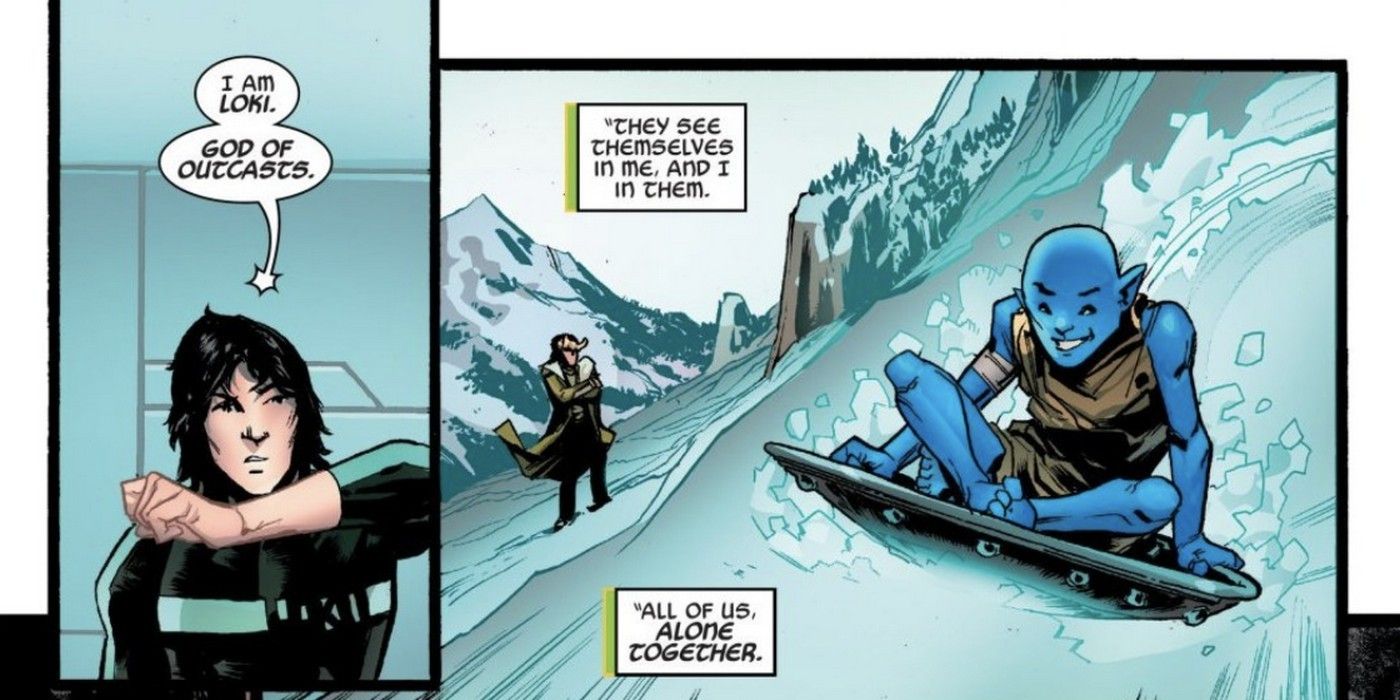
In his self pity, Classic Loki declares that he and the other Variants are not truly Gods of Mischief, merely Gods of Outcasts. This line can be found in 2019's Loki #5 comic, where the character ruefully acknowledges his status as someone other outcasts see themselves in, and vice versa. Interestingly, the line carries a double meaning in live-action. Not only is Loki an outcast in the emotional and social sense, but he and the other Variants are now gods in a world full of discarded histories, cities and peoples, making them Gods of Outcasts in the most literal sense.

After the four introduced last week, the Void throws up no less than nine new Loki Variants, who appear briefly as part of Boastful Loki's short-lived mutiny before getting into a violent squabble between themselves. While not all of these derive from Marvel canon, at least two have been glimpsed before in one form or another. The group's leader, played by Tom Hiddleston, is a direct lift from the Vote Loki storyline, in which Asgard's God of Mischief runs for the U.S. presidency in a meta social commentary on the state of modern politics. From the suit to the badge, this Variant looks mostly authentic. Another Loki viewers might recognize is the bearded chap with horns and sunglasses standing second-from-right in the manhole shot. He was previously glimpsed among the Variant Loki holograms on file at the TVA.

Marvel, Pixar - it's all Disney nowadays. In a beautiful case of Easter egg crossover, Mobius rides to Sylvie's rescue in a pruned pizza truck. Though not exactly the same, the design is a close echo of the famous Pizza Planet truck that debuted in Toy Story and has become a recurring Pixar Easter egg ever since. The slice on the roof replaces the rocket, and the vehicle's shape isn't completely unlike Pixar's well-worn delivery van. Woody and Buzz for Spider-Man: No Way Home confirmed?

During the multi-Loki scuffle that puts Spider-Man's three-way finger-pointing contest to shame, Alligator Loki snaps Vote Loki's hand clean off. This is most likely a nod to when Loki pretended to cut off Thor's right hand during their Oscar-worthy performance in Thor: The Dark World's final battle but, unfortunately for the would-be President, the Alligator wasn't messing around. The loss of Loki's hand could also be a continuation of the MCU's Phase 2 limb loss motif, which Kevin Feige has acknowledged was an intentional tribute to Star Wars. Among the victims were Thor (though it was faked), Bucky Barnes, Groot, and Aldrich Killian. Assuming he's left-handed, the presidential Loki Variant can now add himself to that list.

As if the Pizza Planet allusion wasn't enough of an Easter egg, the interior of the truck Mobius commandeers has a Hula Girl decoration on the dashboard. While this is a relatively common sight in certain parts of the world, the item has appeared in a host of MCU releases. First came Agents of SHIELD, tied into the TAHITI program that revived Phil Coulson after he was killed by Loki in The Avengers, and then the same figurine was glimpsed in WandaVision when Darcy and Vision team up to hijack a truck.

The second major real-world mystery inside the Void in the USS Eldridge, which suddenly drops from the sky and is immediately devoured by the ever-hungry Alioth. The Eldridge was supposedly turned invisible as part of the "Philadelphia Experiment," but now we know it was the pesky TVA all along.

It's a miracle Mobius' pizza truck moves as fast as it does, considering it's burdened with so many glorious Easter eggs. When the vehicle is parked during the episode's Alioth confrontation, the camera briefly shows the registration as GRN W1D. This would be a love letter to Mark Gruenwald, the Marvel comic book writer who not only served as the physical basis for Mobius M. Mobius, but who also co-created Alioth in the 1990s. Gruenwald has already been referenced in Loki, with episode 2's renaissance fair taking place in the writer's birthplace of Oshkosh, Wisconsin.
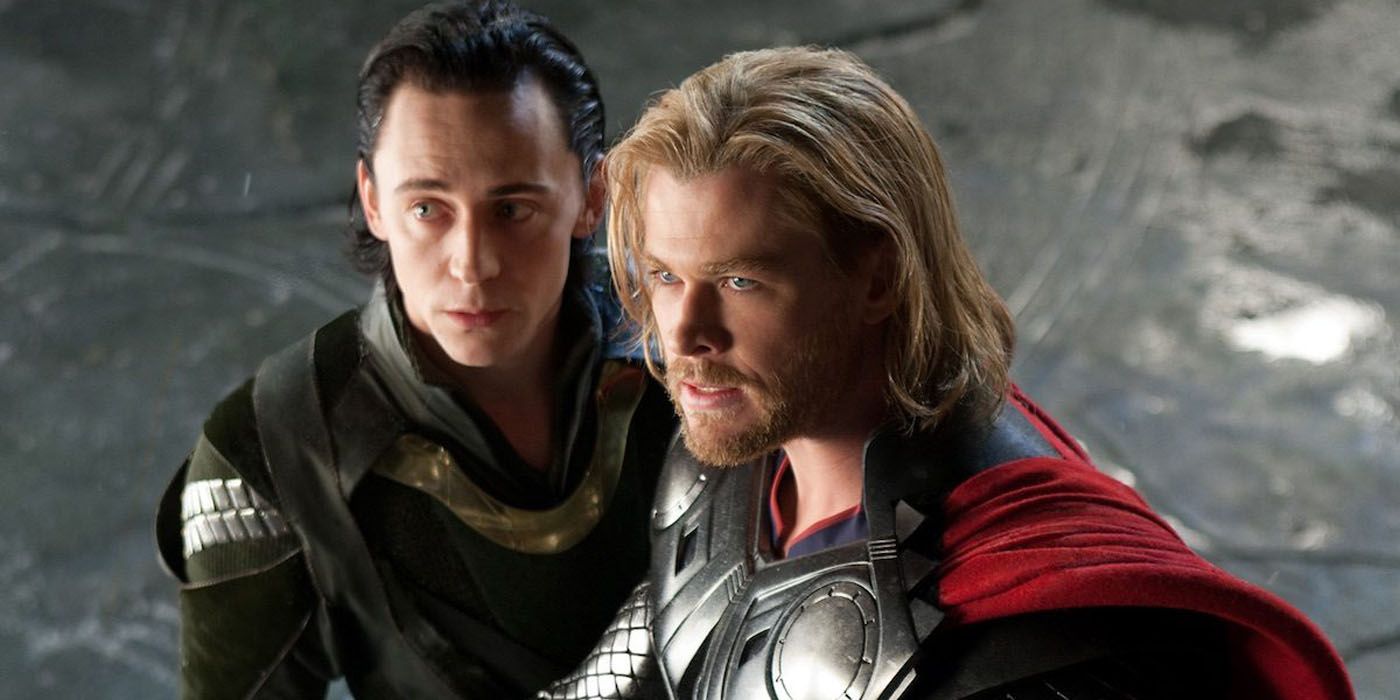
A sad and romantic Loki admits to Sylvie that he's betrayed everyone who ever loved him, and that's certainly no exaggeration. Even this version of Loki, whose MCU tenure extends only to The Avengers, managed to double-cross his adopted family by letting the Frost Giants invade Asgard, and then offed his biological father for good measure before plotting against his own planet, all of which took place in 2011's Thor. Loki then disgraced his lineage by aligning with Thanos (who he also intended to betray, but wasn't a loved one).

As Team Loki (feat. Mobius) gather to take on the intimidating Alioth, a large metallic structure can be spotted to the left of shot, below the hill the heroes are standing upon. This looks suspiciously like Ronan the Accuser's vessel from Guardians of the Galaxy, the Dark Aster, which was destroyed during the Battle of Xandar. Ronan must've deviated from that timeline at some point, forcing the TVA to step in and prune the spacecraft, thereby ensuring Guardians of the Galaxy went ahead as planned.

Also on the battlefield during the climactic clash of "Journey Into Mystery" is another stone head, but this one brings major ramifications for the MCU. The multi-faced statue has one side covered and the other open, which is a design virtually identical to the Living Tribunal from Marvel's comic lore. Another cosmic, time-defying entity, the Living Tribunal is essentially the protector of balance in the multiverse, stepping in when a single force gets too big for its boots and threatens to destabilize reality. He's the TVA's Time-Keepers, only real. That the TVA has pruned a statue dedicated to the Living Tribunal might suggest they're looking to erase any mention of the multiverse's real omniscient guardian.

The instantly recognizable design of SHIELD's helicarriers has traditionally made for a great Easter egg, with Deadpool even using one of these bases as a setting for its final battle. Another downed helicarrier can be found in Loki's Void realm, once again while Loki and Sylvie are taking on Alioth. There are any number of ways SHIELD's antics might've upset the TVA.
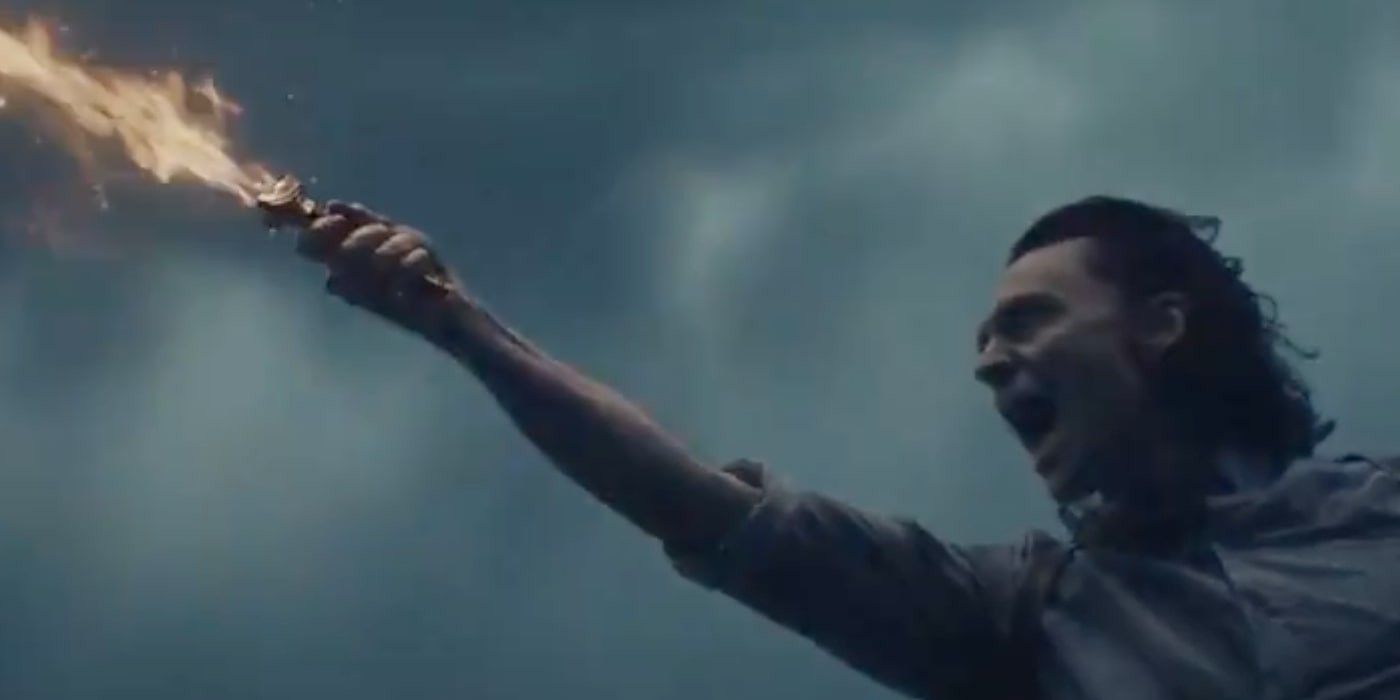
Loki's latest Easter egg extravaganza wouldn't be complete without some deep-cuts into Norse mythology. Before his fateful mission to escape the Void, Loki receives a golden blade from Kid Loki. When Sylvie needs a distraction to enchant Alioth, Loki sets this small sword aflame, waving it around like a red rag to a temporal bull. This image could've been inspired by the mythological Norse weapon Laevateinn, which was forged by Loki himself and, in some descriptions, is said to possess a burning blade.

Deciding to bow out in a blaze of glory rather than continue surviving miserably in the Void, Richard E. Grant's Classic Loki aids his younger counterparts by catching Alioth's attention. He does this by using sorcery to create a fully-realized illusion of Asgard, complete with royal palace. While it's certainly pleasing to see Loki's home world again, conjuring Asgard speaks to how Classic Loki desperately wishes to go back there.
Related: Loki: Is Classic Loki Really Dead?

Everyone knows that holding hands makes mental powers stronger, and in their joint effort to enchant Alioth, Loki and Sylvie clasp each other's paws tightly. This image acts as somewhat of a homage to Guardians of the Galaxy, where Peter Quill and his new friends held hands to wield the mighty Power Stone against Ronan the Accuser.

Earlier in "Journey Into Mystery," Alioth showed Sylvie a glimpse of a mysterious location that she believed awaited beyond the veil of the Void. Her theory is proved correct when the enchanted guard dog obediently sits and reveals the path to the real Time-Keeper. Kang the Conqueror remains everyone's chief suspect, and the castle seen at the end of the void could form part of the villain's comic book citadel, which serves as his base of operations as a quantum Emperor.
New episodes of Loki stream every Wednesday on Disney+.
from ScreenRant - Feed https://ift.tt/3yu28Vt






0 Comments
Please don't use vulgar comments and avoid discussion on Religious matters